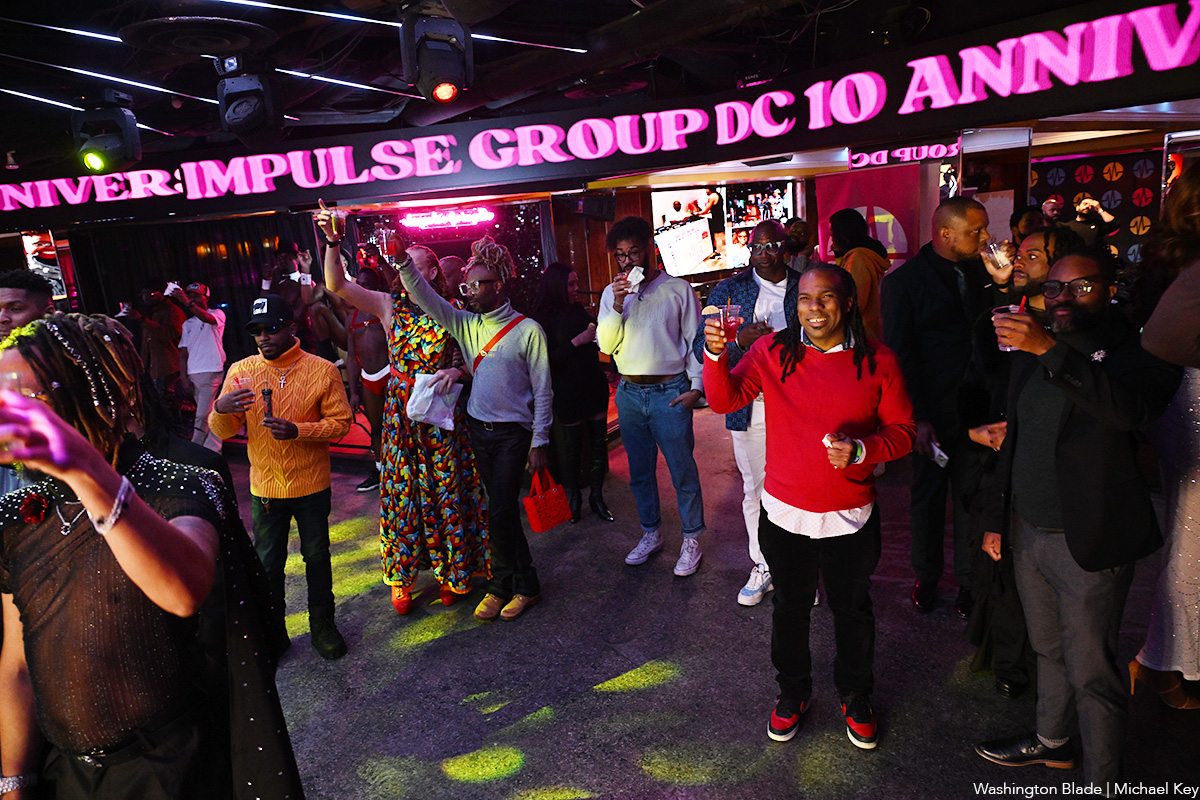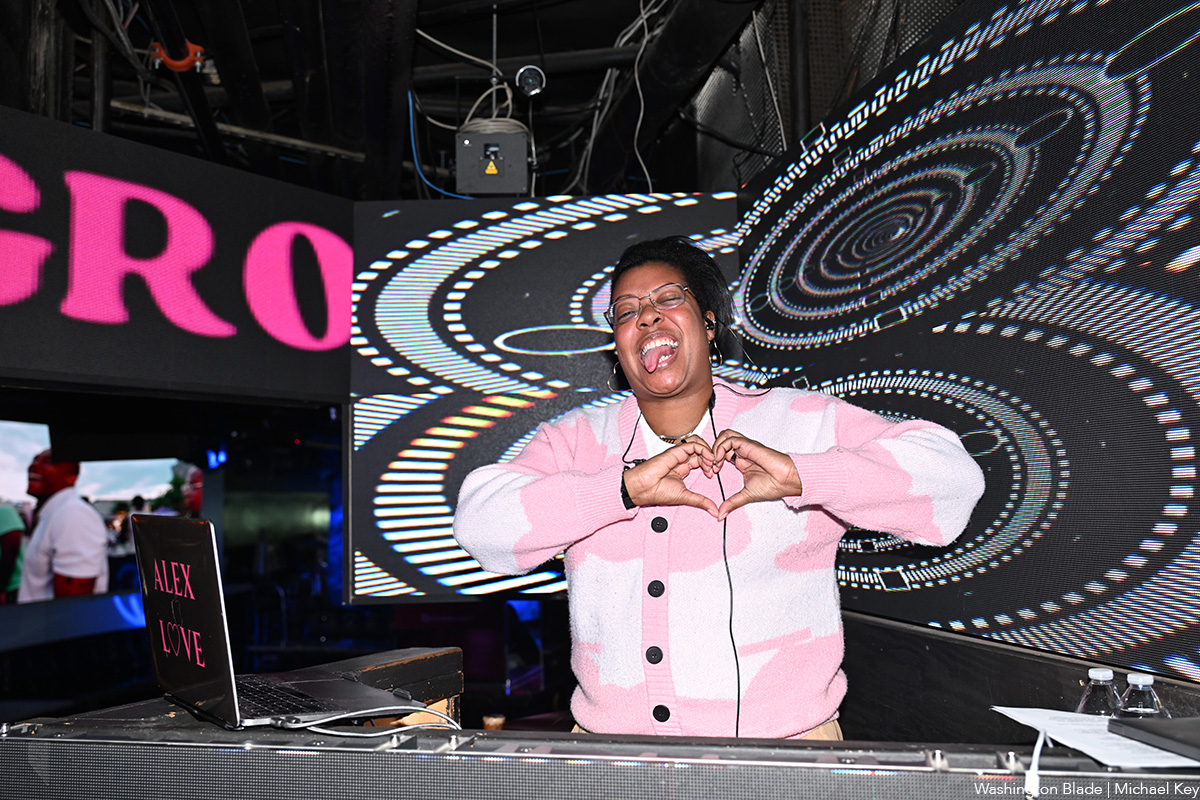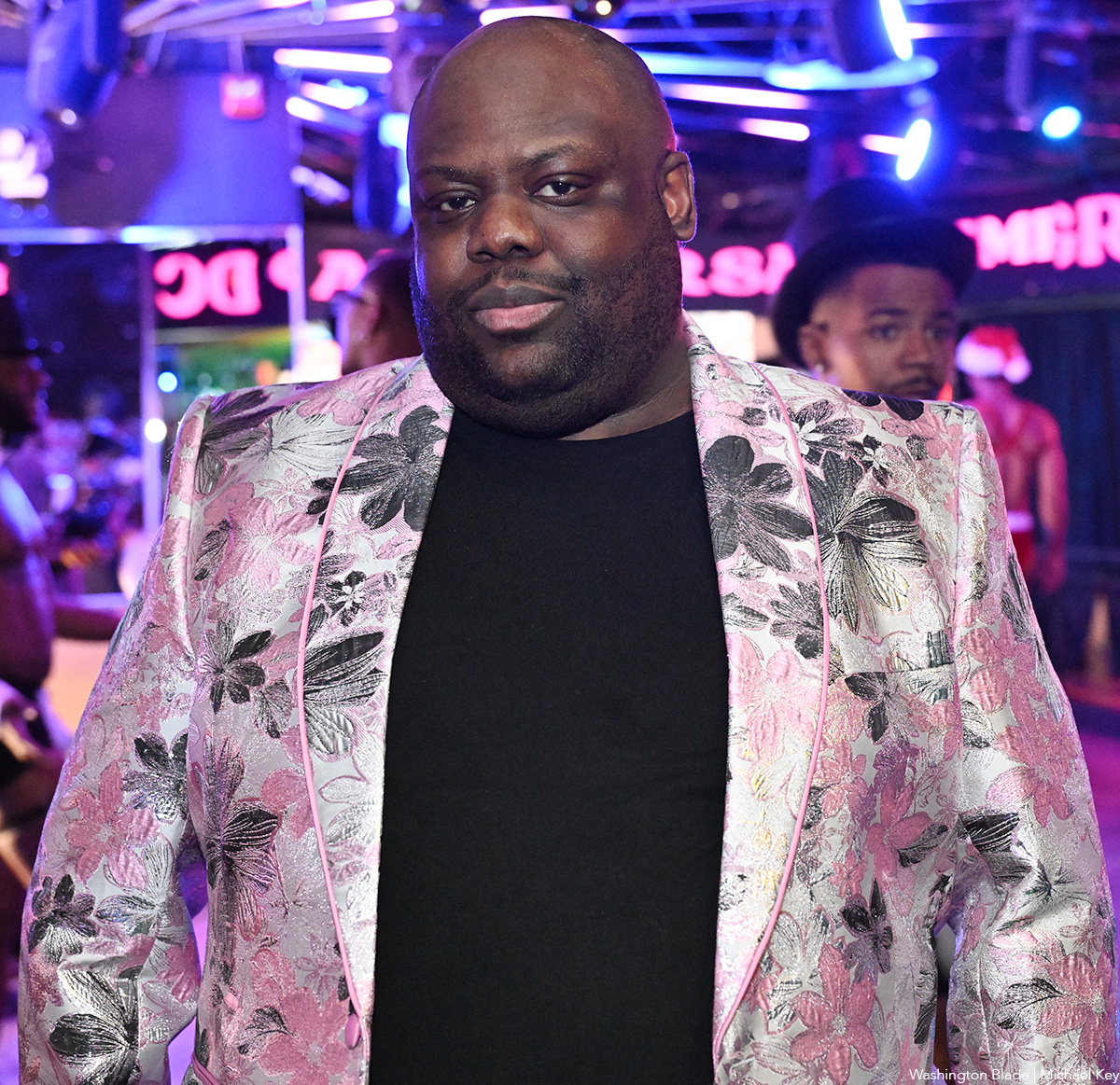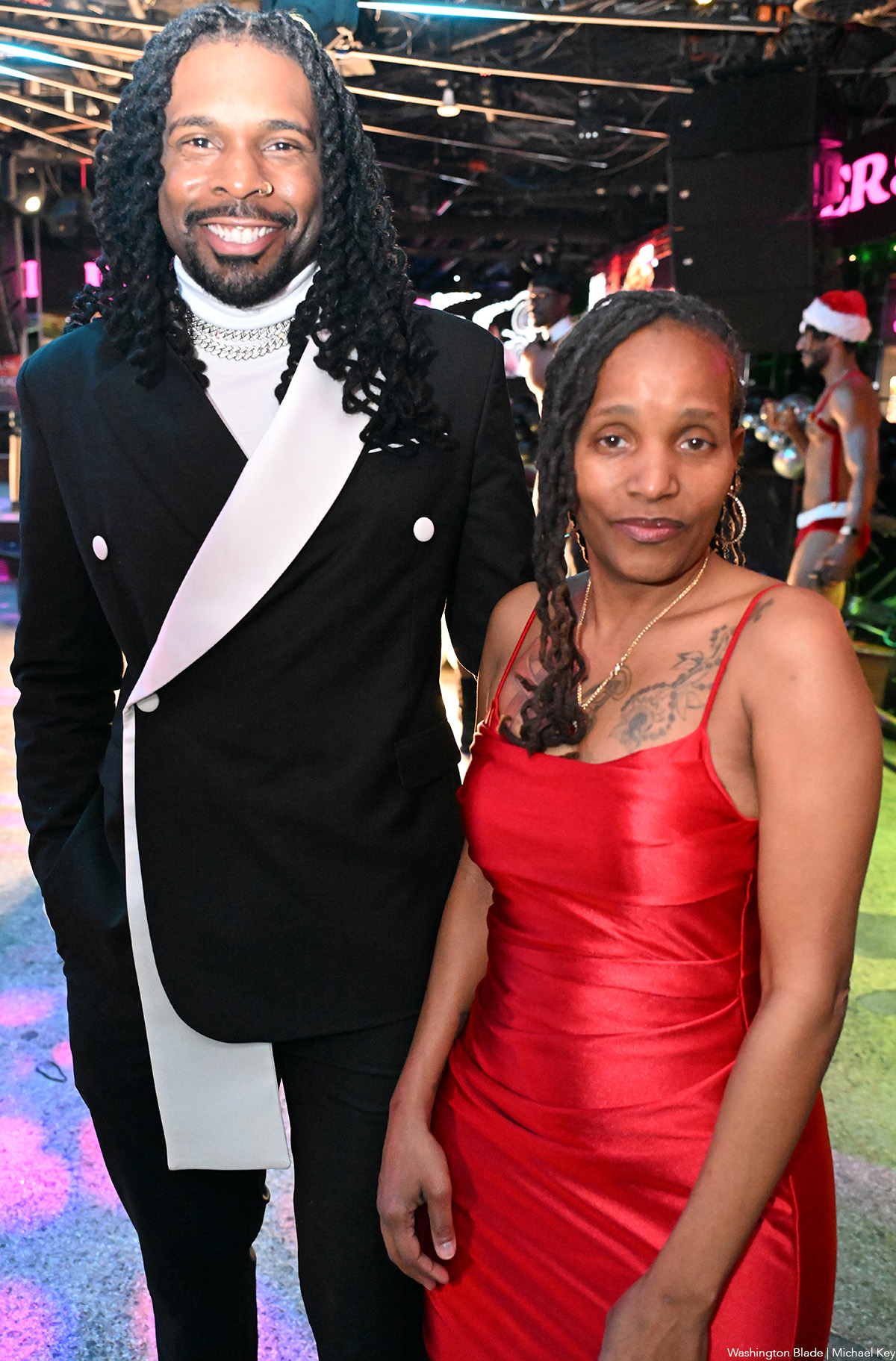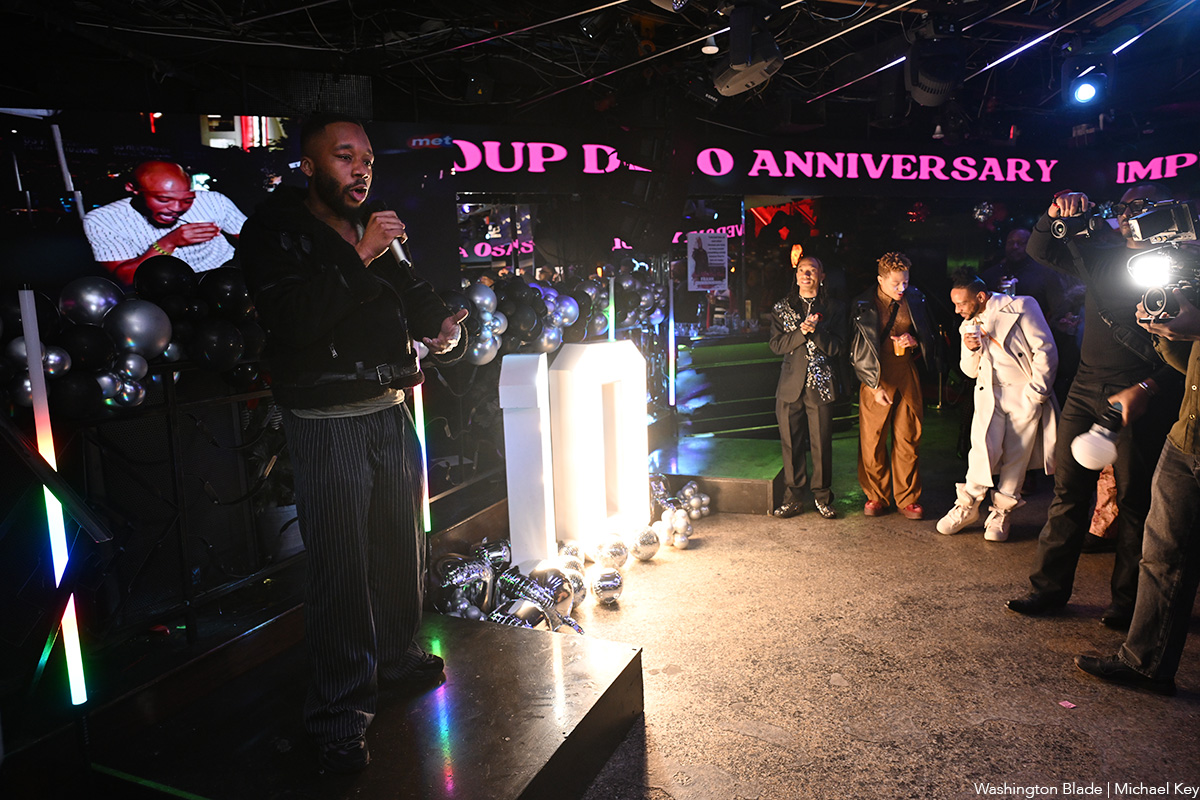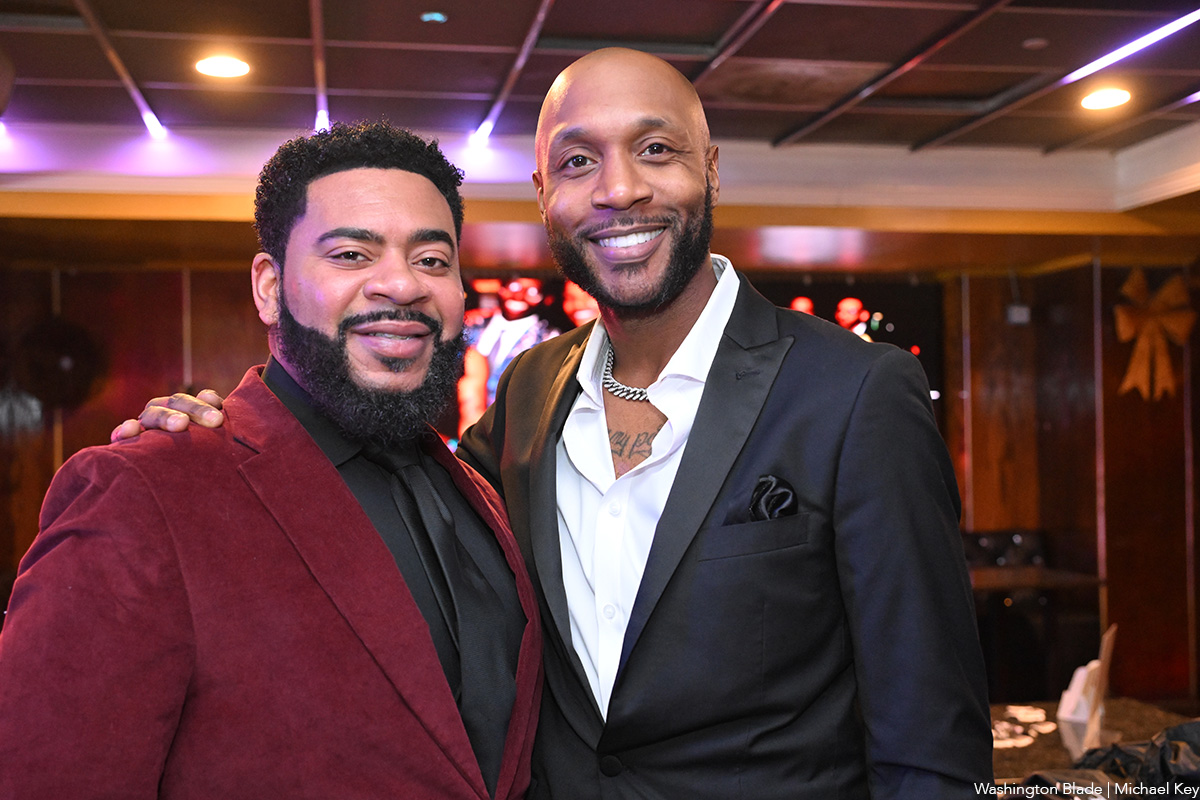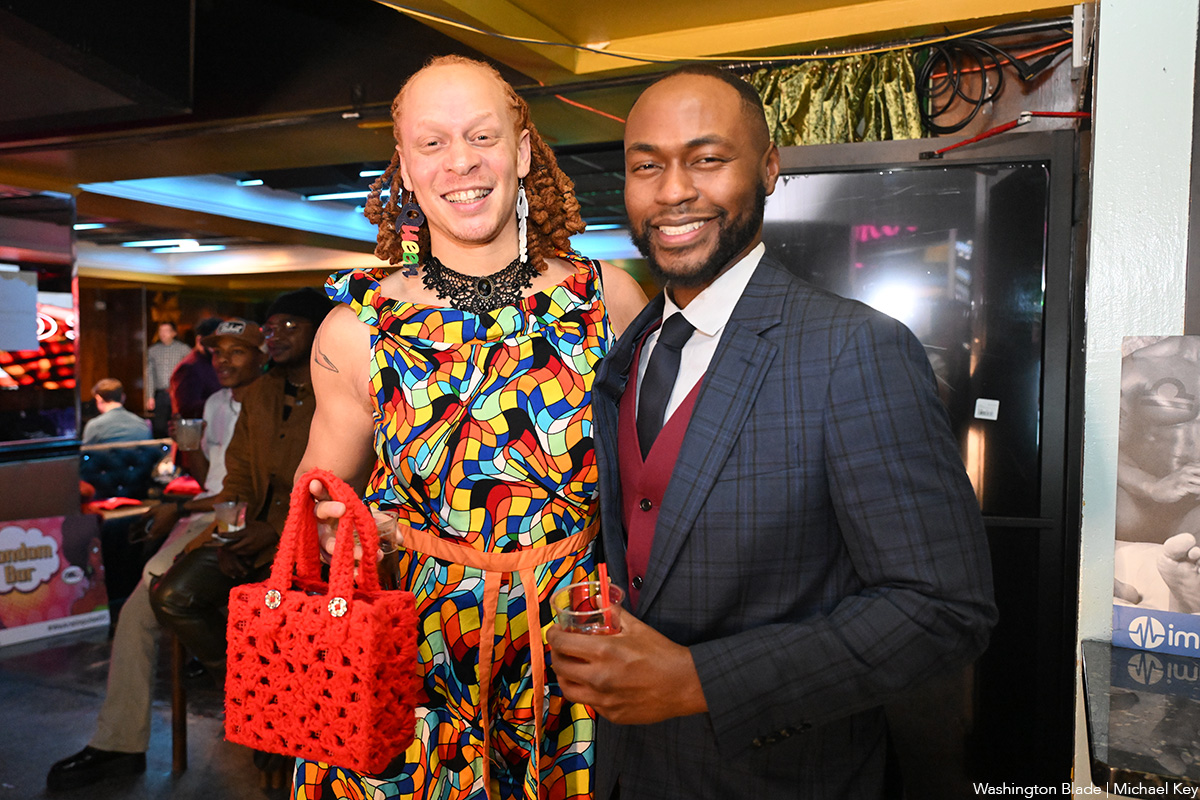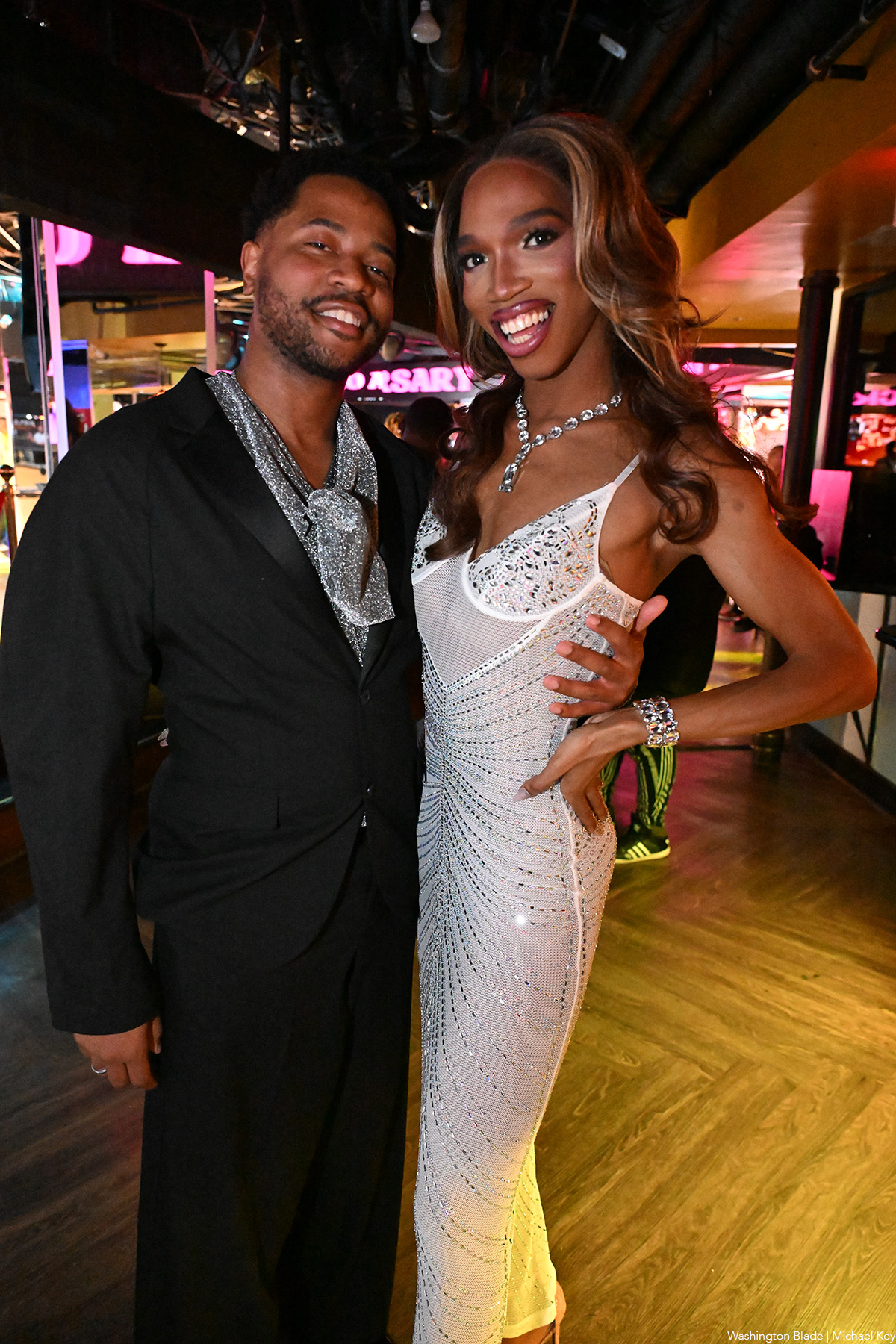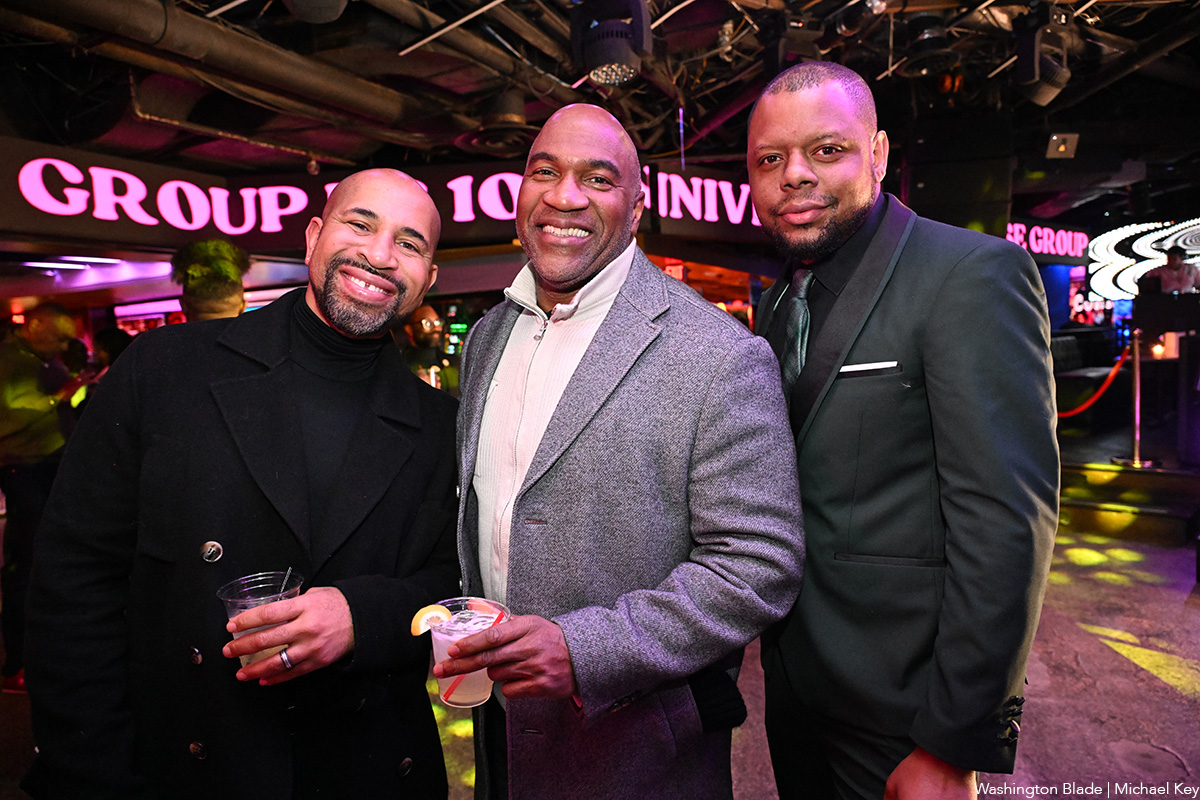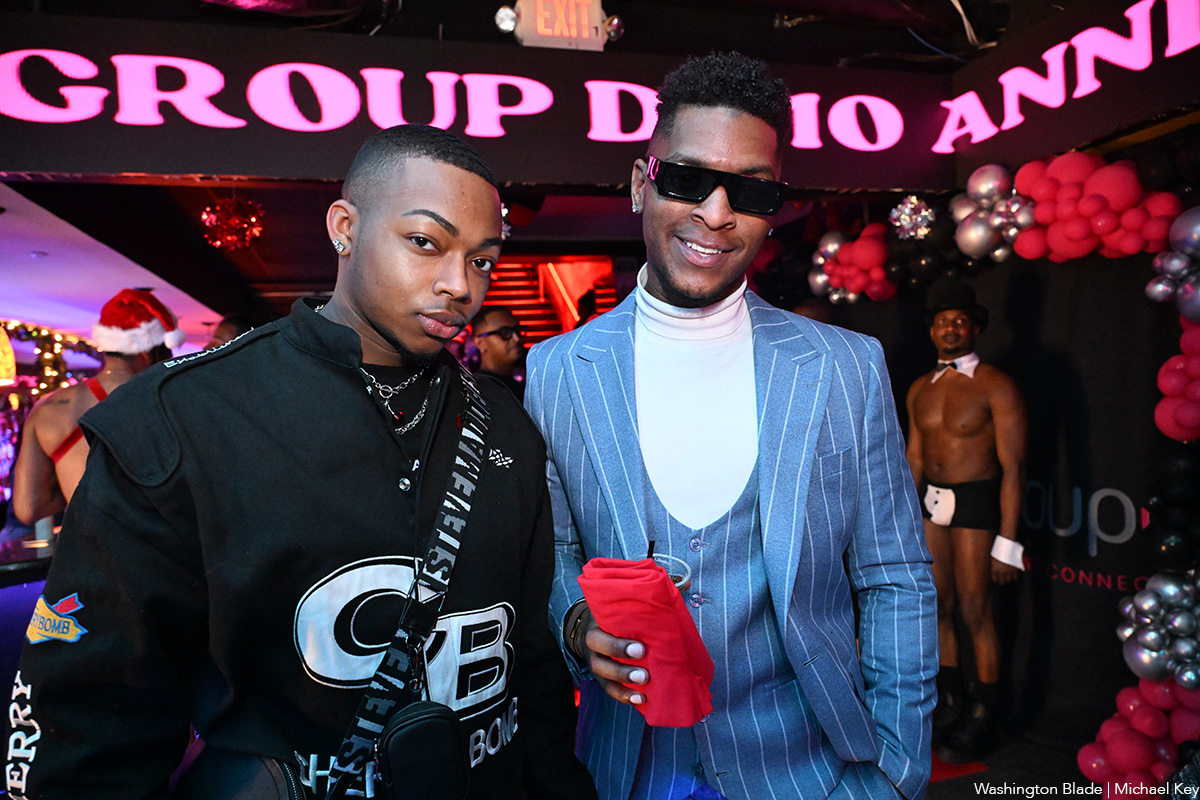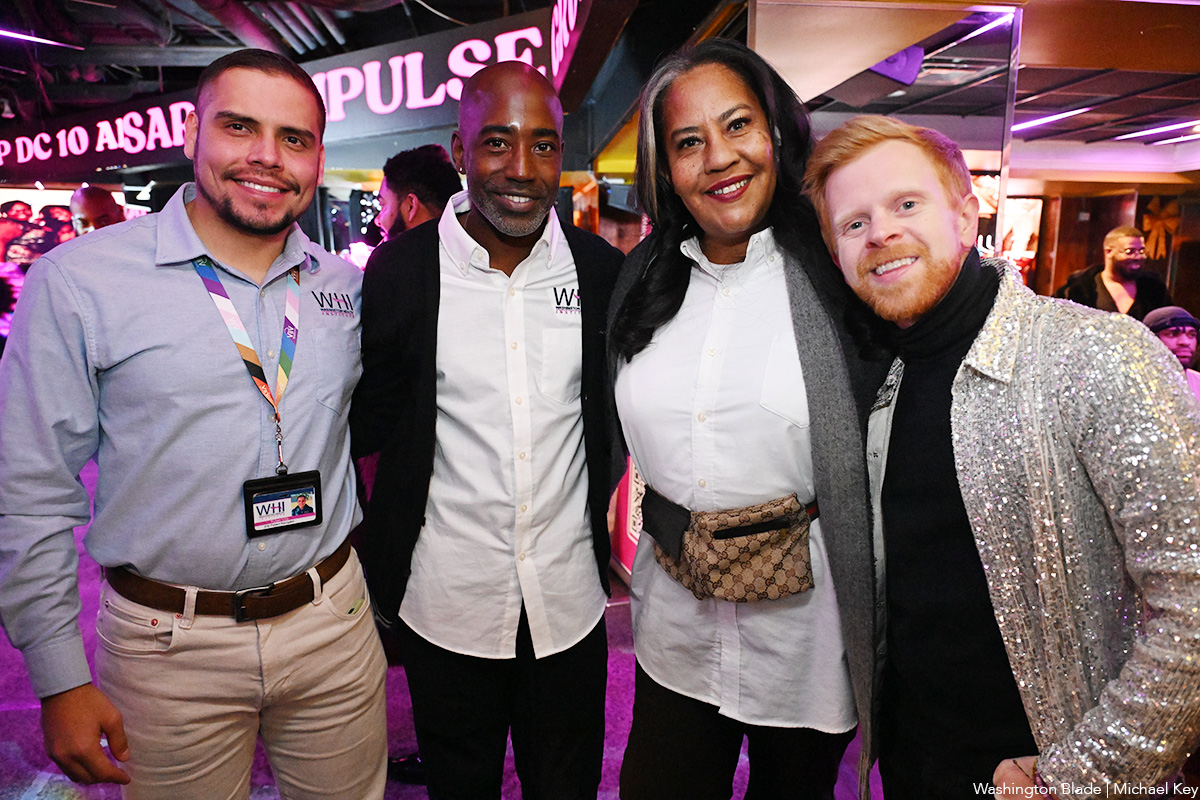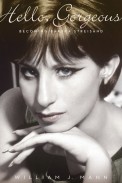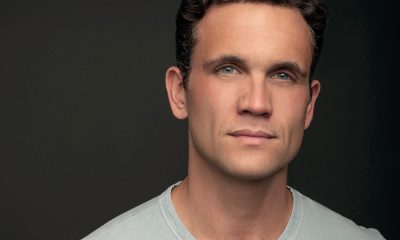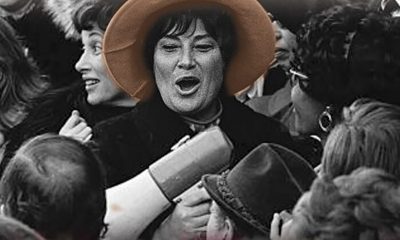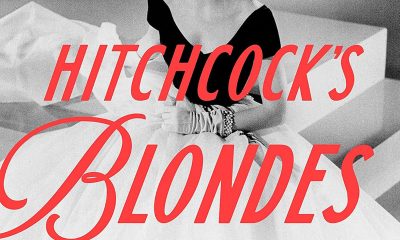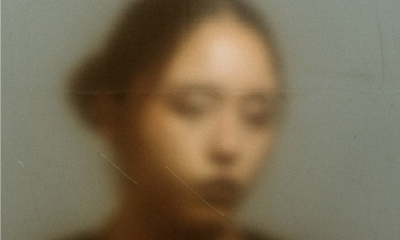Arts & Entertainment
‘Hello Gorgeous’
Gay biographer deconstructs Streisand’s ascent to superstardom
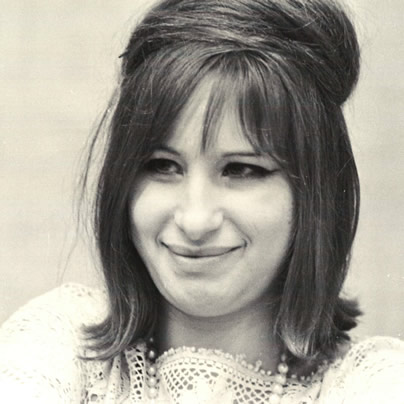
Jewish Literary Festival: William Mann
Closing Night
Wednesday, 7:30 p.m.
D.C. Jewish Community Center
1529 16th Street, NW
Tickets: $10
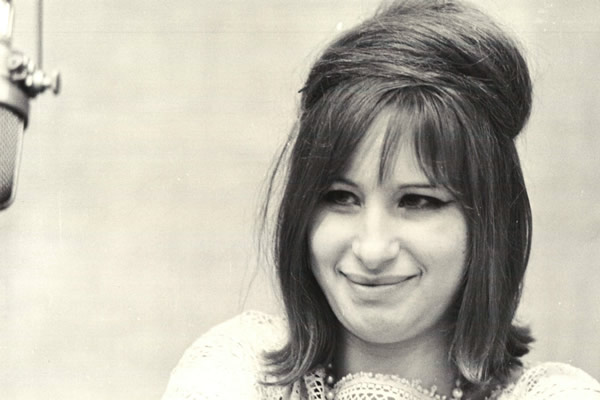
Barbra Streisand in the recording studio for Columbia in New York, mid-1960s. (Photo from the Collection of Stuart Lippner, courtesy Houghton Mifflin Harcourt)
It’s an interesting time for Barbra Streisand fans.
She’s on tour and played New York last weekend (no D.C. dates scheduled).
A (sort of) new album dropped Oct. 9 called “Release Me” that collects 11 previously unreleased outtakes from various album projects going back to the beginning of her career in the early ‘60s. The faithful legion, of course, are beside themselves finally getting to hear rare cuts like her interpretations of Jimmy Webb’s “Didn’t We” and “Home” from “The Wiz.” Her MusiCares tribute concert, in which she was serenaded last year by Diana Krall, Barry Mainlow, Seal, Stevie Wonder and others, is out on DVD and Blu-ray from Shout! Factory Nov. 13.
But just as interesting is the new book “Hello, Gorgeous: Becoming Barbra Streisand,” also released this month from gay author William J. Mann, who, in addition to several novels, has penned well-received bios on William Haines, John Schlesinger, Katharine Hepburn and Elizabeth Taylor. Mann, an iconoclast who doesn’t smash his subjects but delights in deconstructing widely parsed anecdotes of show biz folklore, zeroes in on Streisand’s early years from early 1960 (when she was 17) to the spring of ’64 by which time she had opened in the long-delayed “Funny Girl” on Broadway and recorded three platinum-selling albums for Columbia.
Mann focuses on her early years because he says “everything we think we know about her can be traced back to this seminal period … She arrived in New York in 1959 as a penniless teenager without any connections or experience. Less than five years later she was the top-selling female recording artist in the country and the star of one of Broadway’s biggest smash hits. Going in as close as I have in this book has allowed me to really shed light on how she accomplished such a feat.”
Mann’s in Washington Wednesday on his book tour at the D.C. Jewish Community Center for a 7 p.m. Streisand presentation after which he’ll sign copies of the book. During two phone chats this week, the 49-year-old author talked about the process of bringing the book — he wasn’t particularly a Streisand fan before — to fruition and how writing it compared to his mammoth Hepburn and Taylor tomes.
Mann says focusing on Streisand’s early years turned out to be an unexpected advantage. Because few of the key players are still in touch with the notoriously private and exacting legend, they felt freer, Mann says, to cooperate. He wasn’t on a mission to bash Streisand, but he did want an honest and fresh take.
“These very, very famous people really live in a bubble,” he says. “It becomes virtually impossible to get an unvarnished opinion because any colleague you talk to is going to have nothing but superlatives and that becomes very difficult. … About 90 percent of the people I spoke to didn’t continue on with her. … so they could be candid. They didn’t have to think, ‘Gee, is Barbra gonna be pissed at me, I have to work with her next month.’”
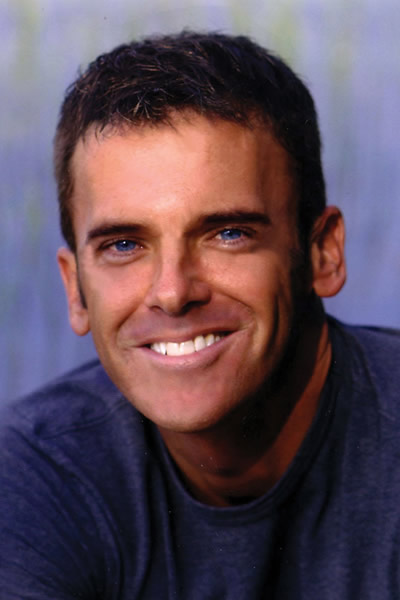
Gay historian and author William J. Mann (Photo by Michael Childers; courtesy Houghton Mifflin Harcourt)
Despite calling the book “notable for its breadth of detail and fair mindedness,” biographer James Gavin writing for the New York Times said “little” of the book is new, a point Mann counters with his biggest coup — being granted the right to delve into the Jerome Robbins (the Broadway legend who worked on “Funny Girl”) papers at the New York Public Library, which had not previously been plumbed for any Streisand book and are not available to researchers (Mann got an exception through the Robbins’ estate).
And even though Streisand’s first boyfriend, Barry Dennen has written an entire book (1997’s “My Life with Barbra”) on their relationship, Mann says he got fresh material from the gay actor for “Gorgeous.”
One of Mann’s favorite experiences was visiting Phyllis Diller, who became a pal and mentor of the young Streisand during their time performing at seedy New York nightclub the Bon Soir in the early ‘60s. (Diller died in August.)
“She was such a hoot,” Mann says with a laugh. “That interview was probably the most enjoyable of the process. I got to go to her house and she was flirting and laughing. I asked her if she’d give me one of her trademark laughs and she did. I just sat there thinking, ‘I love my job.’”
Other “gets” weren’t so splashy but proved equally invaluable. Though scads of Streisand material has been released and is on YouTube, Mann says the Streisand aficionados — almost all gay — were helpful. He thinks his track record on the Hepburn and Taylor books helped open doors on several fronts.
“There’s one fan, and of course he’s made me promise never to reveal who he is, who had some really amazing stuff. There was a DVD (Streisand) was planning to put out maybe five-six years ago of all her old TV appearances but for whatever reason, it never came out. This guy had a bootleg copy of it, which was extraordinarily helpful. Another fan had some of her original contracts. Which is crazy. Who knows how they get this stuff. You’d think she’d have those herself, but somehow they had them and those were very helpful as well. And of course once you get in those fan circles, one things leads to another and another. I didn’t write it for the fans, because then you’d end up censoring it to please them, but they were a great help.”
Early signs are good.
According to Nielsen BookScan, the book has already sold about 2,000 copies. And a glowing USA Today review said Mann’s “meticulous research and insightful analysis go deeper than any previous (Streisand) biography.” Liz Smith called it “excellent.” Amazon reader feedback has been highly positive and perhaps the surest sign that the writer did his homework, there’s been nary a peep, at least so far, from the Streisand camp (she devotes a whole section of her official website to debunking what’s written about her — check out the juicy reads on her tangles with Larry Kramer over a never-made film adaptation of “The Normal Heart” she wanted to do).
At more than 500 pages, “Gorgeous” makes for a lengthy yet brisk read. Mann, who splits his time between New York and Provincetown (where he does most of his writing), is happy to engage a few questions the book inspires, one common enough that he’s written a Huffington Post piece on the topic: that is, surely it’s no coincidence that Streisand, who had several key gay men in her life very early on in her career, ended up one of the biggest gay entertainment icons of all time, right?
“It’s not a coincidence at all,” he says. “She was shaped by so many gay influences … in various ways. The way she dressed, the way she put a song across, the way she styled her songs, they way she interacted with an audience, it’s so obvious all her early mentors were gay and I believe that when those early audiences went to see her, they responded to something familiar. The way she laughed, the way she moved, her campy humor. There was something there gay men recognized and thought, ‘Oh, we can relate to this chick.’ And she was not the first one to have this happen either. It goes all the way back to Mae West and the drag queens she worked with in New York. You see it with Judy (Garland) with Roger Edens, with Joan Crawford and Billy Haines … with Madonna it was the same thing.”
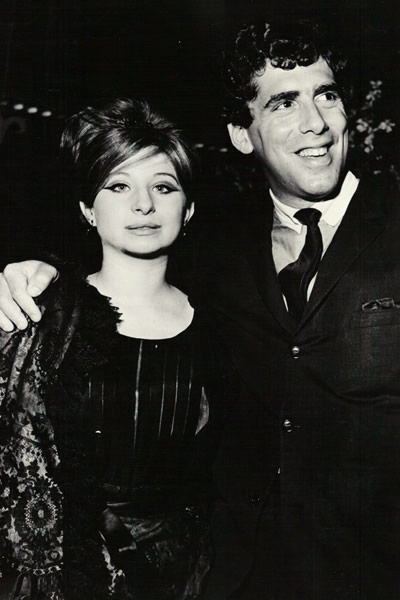
Barbra Streisand with first husband, actor Elliott Gould en route to the Tony Awards on April 29, 1962. (Photo from the collection of Stuart Lippner, courtesy Houghton Mifflin Harcourt)
And since Mann, with the Taylor and Streisand books especially, has focused on the nature of fame and how it was achieved — a dissection of the lucky breaks versus the raw material — another question occurs: given Streisand’s undeniable talent and famous drive, was her legend and success inevitable?
Mann says no.
“She would like us to think that, but no, I don’t think it was at all. I think she benefited form some really shrewed salesmanship and a degree of luck. Just the fact that there were some major parts with ‘I Can Get it For You Wholesale’ and “Funny Girl’ for unusual looking Jewish girls, she was lucky that she was there for those parts at the time they came along. Of course she’s brilliantly talented but there are lots of people who were. You hear some of these other singers from the nightclub era like Blossom Dearie or Joanna Beretta and you’re like, ‘Wow, they’re every bit as good as Barbra,’ but they lacked something — either a very shrewd publicity campaign on their behalf or perhaps their own ambition … it took a terrific amount of PR to make it happen.”
Game time: Kate, Liz or Babs?
William J. Mann has written well-received bios of three of the most famous legends the 20th century produced: Katharine Hepburn, Elizabeth Taylor and now, Barbra Streisand. At the end of an interview, Mann was game for a “lightening round” in which he considers how the three icons stack up. He had to answer each question with one of the three names.
Of the three, which had:
- the most raw talent? “Streisand”
- the most career triumphs? “Taylor”
- Was the most personally content? “Taylor”
- Whose personality evolved the most over the decades? “Hepburn”
- Which was the most fan friendly? “Taylor, by far.”
- The most private? “Streisand. Hepburn was private, but she also put things out there, although not always her true self. So I guess Streisand.”
- Whose work has best stood the test of time? “That’s kind of a draw. They all have. You look at Hepburn in a film like “Alice Adams,” which is this beautiful, brilliant, heartbreaking film that totally stands up. Or Elizabeth in ‘Virginia Woolf’ and you just think, ‘Wow, nobody could have done that better.’ Or one of Barbra’s albums.”
- Which had (or has) the most ardent fans? “Streisand”
- Was the toughest to research? “I suppose Hepburn but she had just passed away so that opened some doors. The other two were alive when I was writing.” (Taylor died shortly after the Mann book came out.)
- Had the most gays in her personal life? “Taylor”
- Had the easiest path to stardom? “Taylor. It was practically handed to her.”
- The toughest? “Streisand, even though it was really fast.”
- And just for fun, any word on how Streisand or Hepburn felt about tying for the Best Actress Oscar in ’68? “They both probably hated to share it,” he says. “Hepburn made a big show of not caring about the Oscars but of course she cared a great deal. … Streisand was very gracious when she accepted (Hepburn did not attend) and said she was ‘in great company.’ It was probably unlike either of them to send the other a congratulatory note, but I don’t fully know the answer to that or whether anybody ever tried to get them together for a photo. I suspect neither of them would have been too wild about that.”
— Joey DiGuglielmo
Books
‘Dogs of Venice’ looks at love lost and rediscovered
A solo holiday trip to Italy takes unexpected turn

‘The Dogs of Venice’
By Steven Crowley
c.2025, G.P. Putnam & Sons
$20/65 pages
One person.
Two, 12, 20, you can still feel alone in a crowded room if it’s a place you don’t want to be. People say, though, that that’s no way to do the holidays; you’re supposed to Make Merry, even when your heart’s not in it. You’re supposed to feel happy, no matter what – even when, as in “The Dogs of Venice” by Steven Rowley, the Christmas tinsel seems tarnished.

Right up until the plane door closed, Paul held hope that Darren would decide to come on the vacation they’d planned for and saved for, for months.
Alas, Darren was a no-show, which was not really a surprise. Three weeks before the departure, he’d announced that their marriage wasn’t working for him anymore, and that he wanted a divorce. Paul had said he was going on the vacation anyhow. Why waste a perfectly good flight, or an already-booked B&B? He was going to Venice.
Darren just rolled his eyes.
Was that a metaphor for their entire marriage? Darren had always accused Paul of wanting too much. He indicated now that he felt stifled. Still, Darren’s unhappiness hit Paul broadside and so there was Paul, alone in a romantic Italian city, fighting with an espresso machine in a loft owned by someone who looked like a frozen-food spokeswoman.
He couldn’t speak or understand Italian very well. He didn’t know his way around, and he got lost often. But he felt anchored by a dog.
The dog – he liked to call it his dog – was a random stray, like so many others wandering around Venice unleashed, but this dog’s confidence and insouciant manner inspired Paul. If a dog could be like that, well, why couldn’t he?
He knew he wasn’t unlovable but solo holidays stunk and he hated his situation. Maybe the dog had a lesson to teach him: could you live a wonderful life without someone to watch out for, pet, and care for you?
Pick up “The Dogs of Venice,” and you might think to yourself that it won’t take long to read. At under 100 pages, you’d be right – which just gives you time to turn around and read it again. Because you’ll want to.
In the same way that you poke your tongue at a sore tooth, author Steven Rowley makes you want to remember what it’s like to be the victim of a dead romance. You can do it here safely because you simply know that Paul is too nice for it to last too long. No spoilers, though, except to say that this novel is about love – gone, resurrected, misdirected – and it unfolds in exactly the way you hope it will. All in a neat evening’s worth of reading. Perfect.
One thing to note: the Christmas setting is incidental and could just as well be any season, which means that this book is timely, no matter when you want it. So grab “The Dogs of Venice,” enjoy it twice with your book group, with your love, or read it alone.
The Blade may receive commissions from qualifying purchases made via this post.
a&e features
Local, last-minute holiday gift ideas
Celebrate the season while supporting area businesses

The DowntownDC Holiday Market is bustling. Union Station is decked out with its annual Christmas tree. Washingtonians have wrapped their houses and apartment balconies with festive lights and holiday decorations. The holiday season is here. And with stockings to fill and empty space under the tree, Washington’s local shops and artists have plenty to offer.
Show your LGBTQ and D.C. pride with the Washington Blade’s annual holiday gift guide.
To embrace the holiday buzz: The Blanco Nwèl cocktail from Alchy Cocktails. This Caribbean eggnog is one of Alchy Cocktail’s seasonal holiday cocktails. The flavor profile is similar to coquito, a traditional Puerto Rican Christmas drink with a coconut base. As a queer and Caribbean-owned business, Alchy Cocktails has been based out of Washington since 2021. Blanco Nwèl is available in both cocktail ($24) and mocktail ($12) online and at a variety of holiday markets, including the Tingey Plaza Holiday Market, the Flea Market at Eastern Market, Union Station’s Main Hall Holiday Market, and more. ($24)

A spicy bite: Gordy’s Cajun Okra from Salt and Sundry. These spicy, tangy pickles pull on Southern Cajun-style flavors, packing a punch with paprika, cayenne, and more. Gordy’s is an LGBTQ-owned and Washington-based brand, making this gift an opportunity to support a local LGBTQ business straight from the jar. This pantry staple is available on Salt & Sundry’s website and at its locations in Union Market, Logan Circle, and its Georgetown holiday pop-up store. ($14)


To celebrate Washington pride: The DC Landmark Tote Bag from The Neighborgoods. Native Washingtonians, visitors, friends and family alike will find something to love about this Washington-themed tote bag. Food trucks, the 9:30 Club, the Metro logo and pandas from the National Zoo are just some of the city’s landmarks depicted across the tote in a red, white, and blue color palette. The tote is a part of the DC Landmarks collection, which donates 10 percent of its sales to the American Civil Liberties Union. The Neighborgoods itself is a local, woman-owned business built out of a passion for screen-printing in 2013. The 100 percent cotton canvas tote is for sale online or at the DowntownDC Holiday Market. ($22)
To give friends and family their flowers: The Flowers Bandana from All Very Goods. This 100 percent cotton bandana was designed in Washington and hand printed in India. Its uniqueness comes in being covered with the faces of Black women, representing a “love letter to all women but especially Black women,” according to All Very Goods. The Black woman-owned and operated business, based out of Northwest Washington, has a mission to celebrate diversity and representation through its products. The bandana intends to give Black women their “flowers.” The Flowers bandana is available for purchase online. ($24)

To unlock culinary creativity: The Curious Chef Gift Collection from Each Peach Market. This customizable collection of kitchen oddities — ranging from tinned fish to chili oil — is a quirky gift for the most inventive chefs. The collection is available in a Standard Santa, Extra Goodies and Super Holiday Size for up to $165. The Washington-based market, founded in 2013, permits customers to make the collection special by specifying what unique ingredients are packaged, including products made by local or LGBTQ brands. Each Peach Market offers assembly and pick up in-person at its Mount Pleasant shop and also offers local delivery and nationwide shipping via its website. ($85)

To give a touch of sweetness: The DC Landmark Chocolate Covered Oreo Holiday Cookies from Capital Candy Jar. Wrapped in a festive red bow, this box of nine cookies embraces love for Washington and the holiday season in one. Among the dark and milk chocolate covered cookies are images of the U.S. Capitol, the White House, the Lincoln Memorial, the Jefferson Memorial and festive hollies. The treat, packaged in a Hill East facility just a few blocks from the Capitol, is available for purchase online and at the DowntownDC Holiday Market. ($23.95)

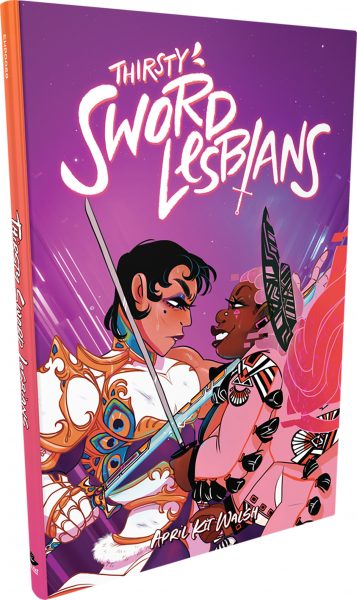
To celebrate queer gaming: Thirsty Sword Lesbians from Labyrinth Games & Puzzles. This roleplaying game embraces lesbian culture by unlocking a world of swords, romance, and battle. Ideal for group settings, the book presents a system of world building and character identities that are best brought to life by creative minds. Labyrinth, which has been a local Washington business for more than 15 years, celebrates non-digital fun through games and puzzles that connect the community. This gift is offered online and at Labyrinth’s Capitol Hill location. ($29.99)
To make a bold statement: The “Resist” T-shirt from Propper Topper. This locally screen-printed black tee features the Washington flag designed within a raised fist, symbolizing both Washington pride, and political resistance. The shirt is made exclusively by Propper Topper, a local Washington business that evolved from a hat shop to a gift store since opening in 1990. The tri-blend unisex shirt is available both for pickup at Propper Topper’s Cathedral Heights location and shipping via the online site. ($32)
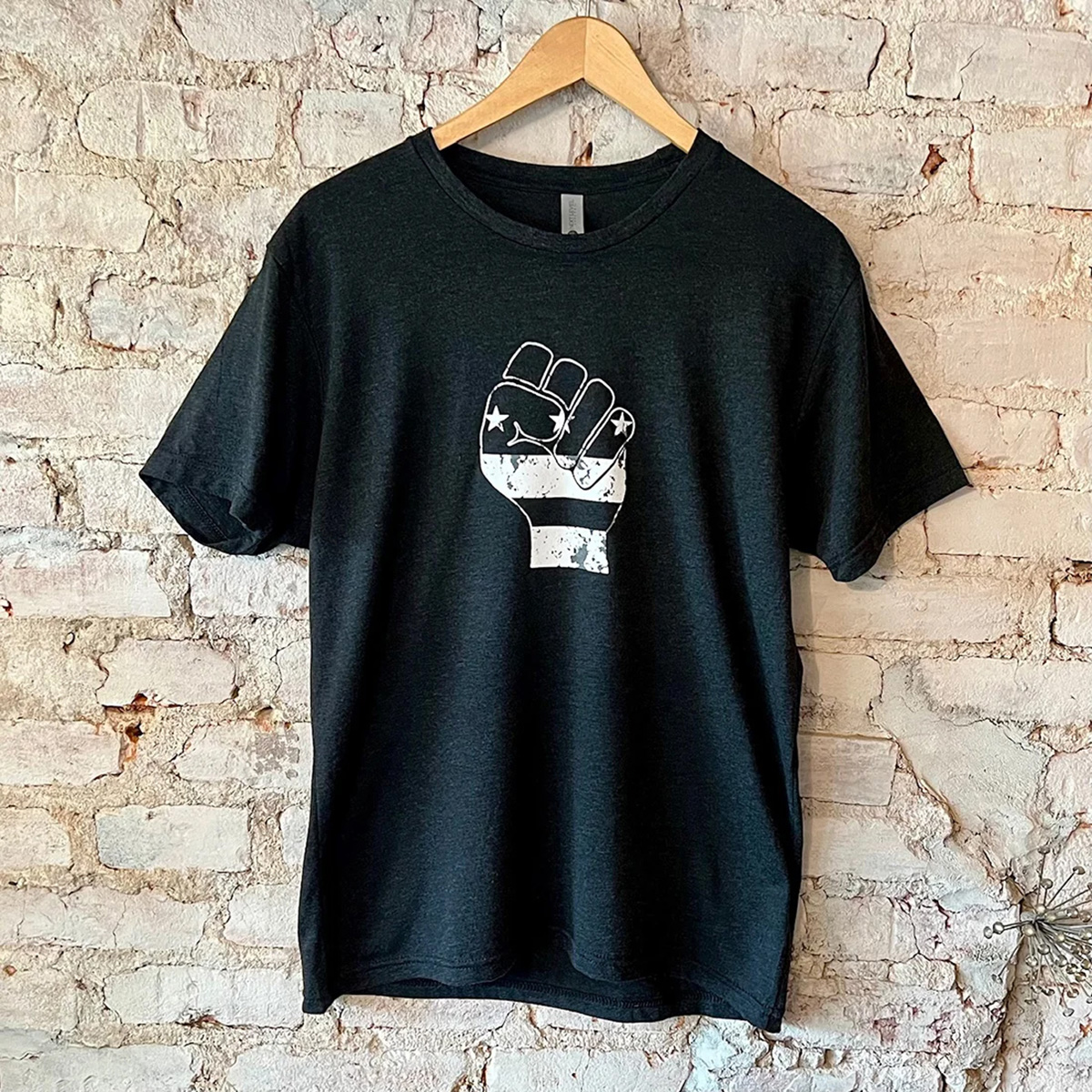
To keep it c(g)lassy: The Glass Ball earrings from Blue Moon Aquarius. Gifting can rarely go wrong when it comes to a new pair of earrings. The unique statement earrings — made of polymer clay, glass, and 18k gold plating over surgical steel — are hand cut, sanded and assembled in Washington, meaning each set is unique. Blue Moon Aquarius, a local brand, is known for its small batch jewelry and home decor designed with clay materials. Available in oxblood, hunter green, lavender, and bluestone color palettes, these earrings are available for purchase on Blue Moon Aquarius’ website and at the DowntownDC Holiday Market. ($48)

To elevate a holiday tea or charcuterie party: The Honey Flight: Tea Lover’s Selection from BannerBee. This local honey company presents the ideal gift to make cozying up with a cup of tea slightly more special. The Honey Flight contains three types of raw wildflower honey infused with fair trade Ugandan vanilla bean, chai spices, and locally sourced lemon thyme herb. The gift is also an opportunity to uplift a family company based in the Mid-Atlantic that offers all-natural, sustainable products. The flight is available online, at the DowntownDC Holiday Market or at the Arlington Courthouse and Dupont Farmers’ Markets. ($36)

For Baltimore shoppers: If you’re in Charm City, don’t miss Balston Mercantile, opened by a gay couple in June. Their gorgeous shop in the Hampden neighborhood offers an array of unique, upscale finds, from barware and artwork to cookbooks and home decor and more. (849 W. 36th St.)
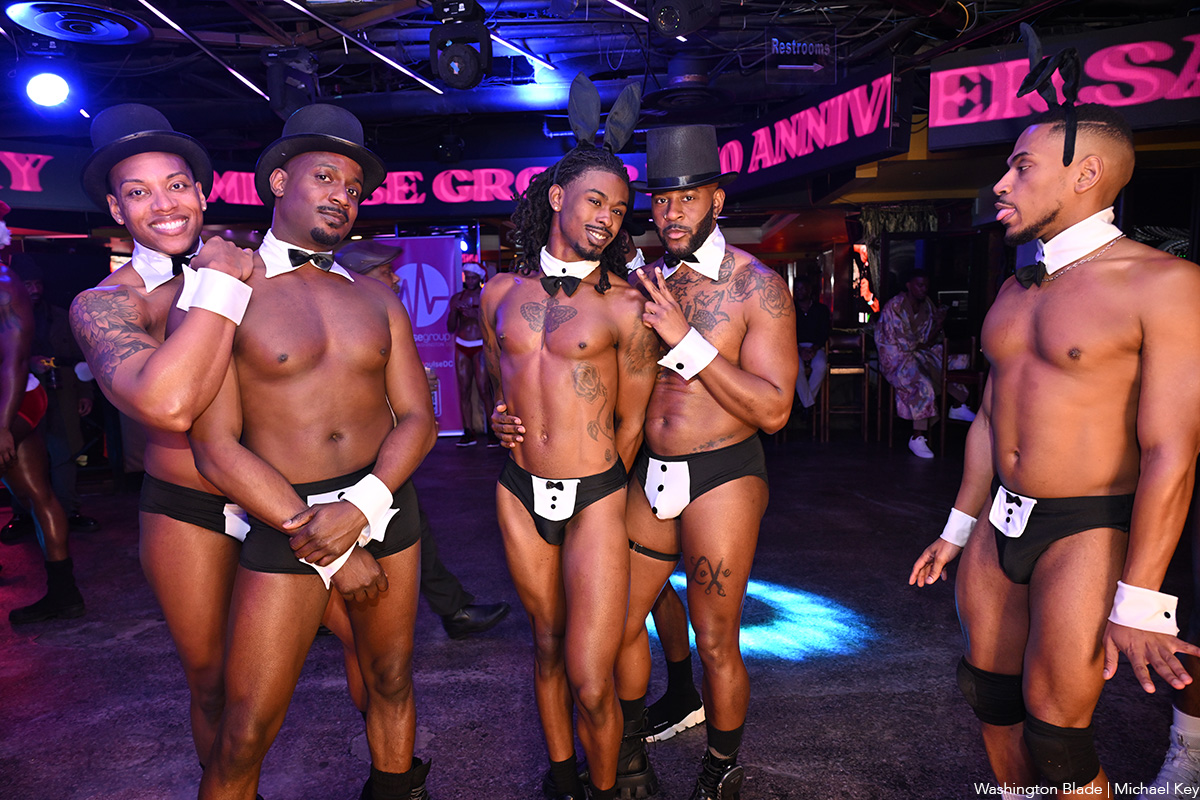
Impulse Group DC held “10’s Across the Board: A Celebration of 10 Years” at Bravo Bravo (1001 Connecticut Ave., N.W.) on Sunday, Dec. 14. Impulse Group DC is a volunteer-led 501(c)(3) and affinity group of AIDS Healthcare Foundation dedicated “to engaging, supporting, and connecting gay men” through culturally relevant health and advocacy work.
(Washington Blade photos by Michael Key)
